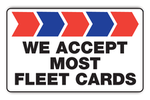We've all heard that expression, "That's a non starter." When it comes to your vehicle, that's not music to a driver's ears. That sickening sound when you start the ignition and instead of hearing the engine crank, you hear it slowly turn over and your dash lights go dim.
There can be many reasons a vehicle won't start, so here's a little history of how the starter came to be an important component of modern vehicles.
You have to move the engine's components to start it. The first cars had a crank that the driver would insert into the front, then start turning things over by hand. When the engine started, you had to release that crank immediately or risk a broken arm. Yes, it happened many times. So, they came up with a better idea: an electric starter, which was a big advance in automotive technology.
With this system, an electric motor rotated a series of gears that turned the gasoline engine's crankshaft so its pistons and parts moved and the engine drew in air. While this happened, electricity went to the spark plugs and fuel headed to the cylinders. When the gasoline engine caught, the starter quickly disengaged. Hey, no more broken arms!
Modern systems use the same principle, so when your vehicle won't start, here are a few things to look out for that might point to the starter.
If the engine turns over s-l-o-w-l-y, it may mean the electric starter motor may just be wearing out and doesn't have enough cranking power. Bushings, brushes, wire windings and a special switch called a commutator may be going bad.
If when you engage the ignition you hear a faint click, that could be a symptom one or more of the starter's components have failed. If you hear a loud click, it could mean that an electrical switch called a solenoid may not be switching the motor on.
If you hear your engine start to turn over but then it stops and is followed by a grinding sound, some gears may not be meshing the way they should.
There may be many more causes (bad alternator, relay, battery, engine, key fob), so this is when it's time to turn it over to your service facility. Sometimes they can send out their own tow truck or recommend a reputable towing company.
But it's best not to let it get to this point. Starter problems often give you advance warning that there is a problem with "almost" not starting or "almost" not turning over. So when you see that very first sign, "start" on over to talk this one over with your service advisor. The opposite of a "non-starter" is a starter, and that is music to anyone's ears.
Tuffy North Clermont
1315 E. Highway 50
Clermont, Florida 34711
(352) 241-9466
https://www.tuffynorthclermont.com/
 Win a $50 Gas Card
Learn more
Win a $50 Gas Card
Learn more
 Sign up texting for $8 OFF Any Oil Change
Learn more
Sign up texting for $8 OFF Any Oil Change
Learn more
 Have a promo code?
Have a promo code? Sign up and start Saving.
Learn more
Sign up and start Saving.
Learn more
 Win a $50 Gas Card
Learn more
Win a $50 Gas Card
Learn more
 Sign up texting for $8 OFF Any Oil Change
Learn more
Sign up texting for $8 OFF Any Oil Change
Learn more
 Have a promo code?
Have a promo code? Sign up and start Saving.
Learn more
Sign up and start Saving.
Learn more

















